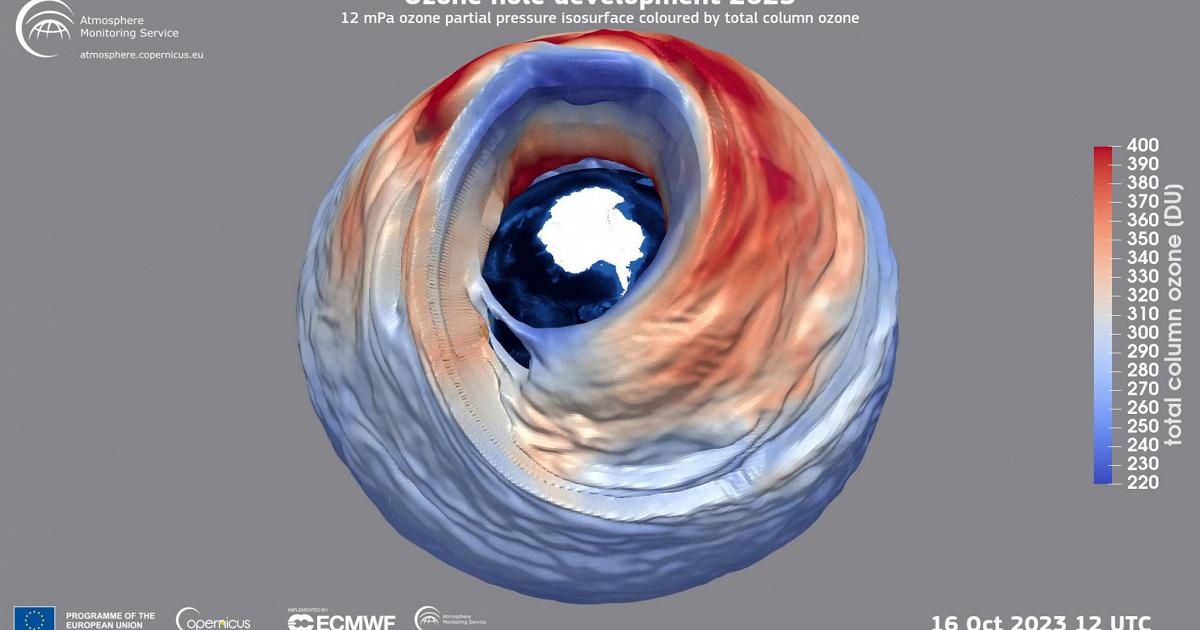The 2023 ozone hole in Antarctica has completed its cycle after a series of ups and downs and twists that surprised the experts.
It was about the seventh longest on record according to data from Copernicusthe European Union’s Earth observation program which he shared on X timelapse animation of this year’s performance: “The 2023 Southern Hemisphere ozone hole finally closed on December 20, becoming the seventh longest in CAMS data. The animation shows the evolution from the early start of August to the late closing.”
This year the ozone hole is opened early and grew rapidlybecoming one of the largest on record in mid-September.
Afterwards, the area became significantly reduced to be within the average, but it was unusually persistent during November, about the size of Antarctica until early December – third largest ozone hole for that time of year according to the records CAMS (Copernicus Atmosphere Monitoring Service).
Then it started to close, with a series of oscillations which delayed its definitive closure until December 20th.
The longest lasting ozone hole according to Copernicus data, which starts from 1979, occurred in 1999 and 2020: both closed on December 27th.
According to scientists, the causes of this behavior can be traced back to climate changes but volcanic emissions may also have played an important role, in particular the eruption of Hunga-Tonga, which occurred between December 2021 and January 2022 which injected enormous quantities of water vapor into the stratosphere. The precise reasons, however, remain to be understood.
The ozone hole in Antarctica is an atmospheric phenomenon that occurs every year. Under normal conditions, it forms between mid to late August, and closes around the end of November.

